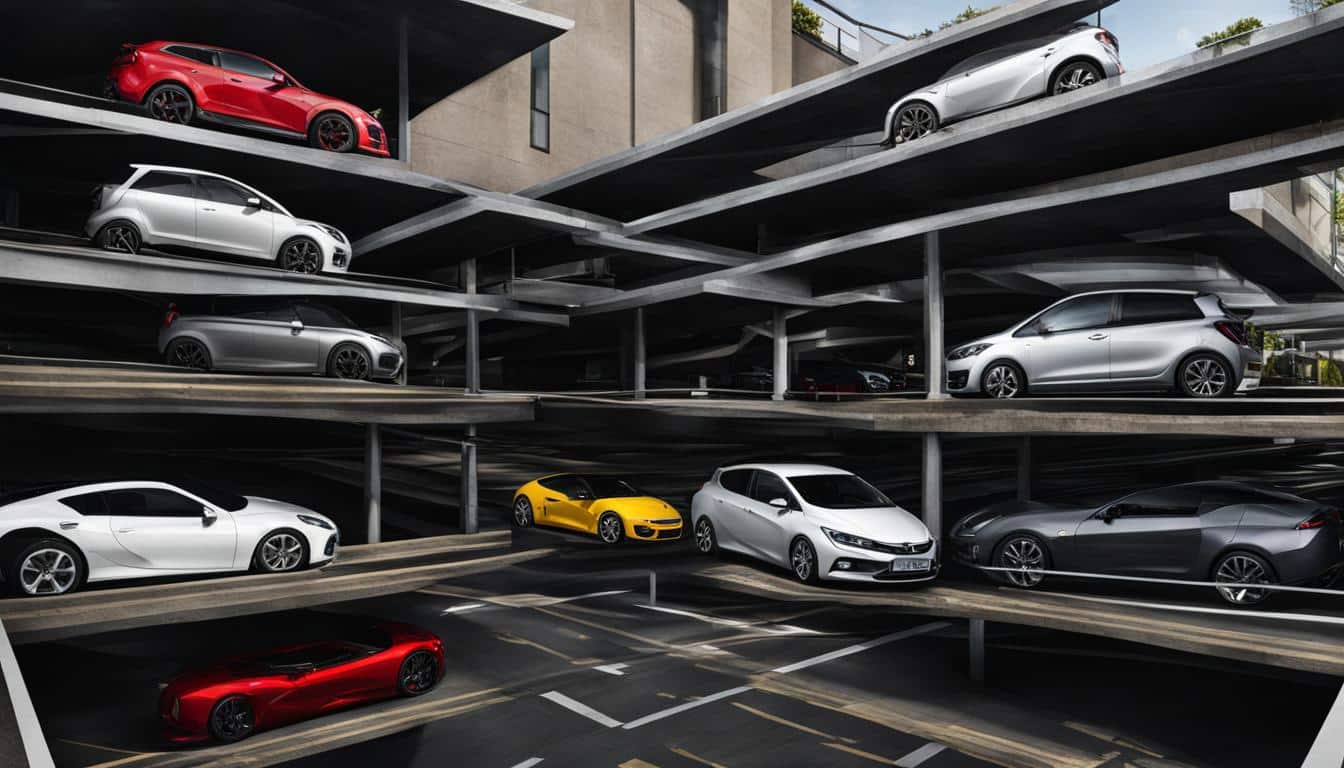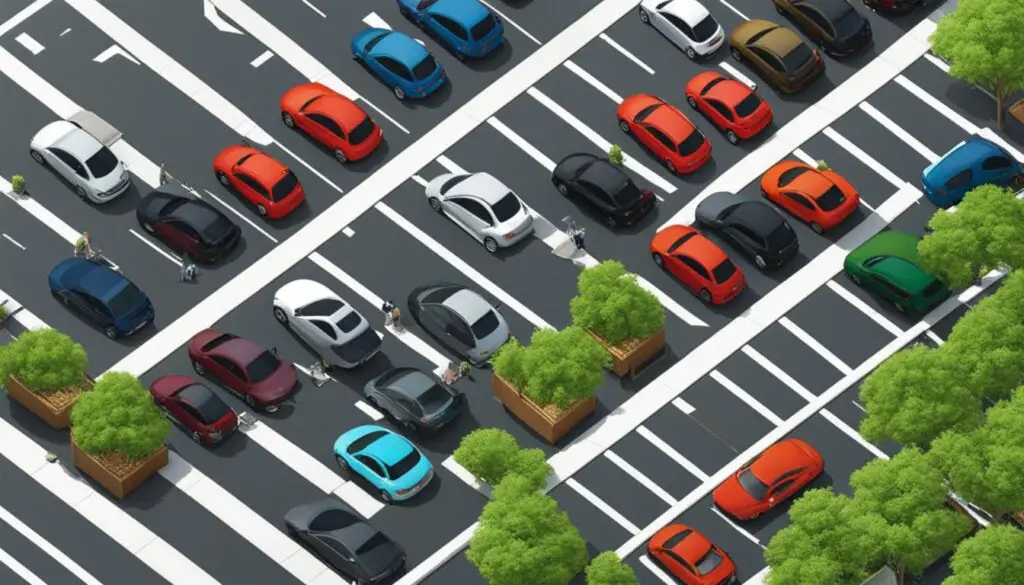
A Guide to Efficient Parking Techniques
As a driver, parking can be a frustrating experience, especially in crowded areas where space is limited. However, with the right techniques and strategies, you can park your car more efficiently, saving time and reducing stress. In this guide, we will explore effective parking methods that will help you maximize car parking space.
By following these tips, you can become a master of efficient car parking, and never have to worry about finding a parking spot again. Whether you are a new driver or a seasoned pro, there is always room for improvement when it comes to parking.
Key Takeaways:
- Efficient car parking requires proper technique and strategy.
- Maximizing car parking space is essential in crowded areas.
- Effective parking methods can save time and reduce stress.
- By implementing these tips, you can become a master of efficient car parking.
- Always abide by parking rules and regulations to ensure a smooth parking experience.
Tips for Efficient Car Parking
Efficient car parking is a crucial skill that can save you time and reduce stress in your daily life. By following these tips, you can become a master of smart car parking strategies and easy car parking tips:
- Choose the right parking spot: Look for a spot that is easy to access and has enough space for your car to fit comfortably.
- Use reference points: Take note of the surroundings, such as nearby pillars or lines on the ground, to help you visualize the space and maneuver your car more easily.
- Back into the parking spot: This allows for easier exit and better visibility when leaving the spot.
- Be patient: Take your time and avoid rushing, especially when parking in tight spots, as it can result in accidents or damage to your car.

By implementing these tips, you can optimize your car parking experience and become more confident in navigating parking lots. Remember, efficient car parking techniques not only benefit you, but also help to maximize the use of parking spaces for the benefit of everyone.
Maximizing Car Parking Space
One of the keys to efficient car parking is maximizing the available space. By parking your car in a way that optimizes the use of space, you not only make the most out of the area but also allow for more cars to be accommodated.
There are various efficient car parking techniques you can use to make the most out of the parking space available:
- Park close to the entrance or exit of the parking lot to reduce the distance you need to travel to your destination.
- Consider parking in a spot that requires a diagonal or back-in parking technique, as this can save extra space compared to traditional parking.
- Be mindful of the lines and use them to your advantage. Park the car as close to the line as possible without going over it to maximize the space between the adjacent vehicles.
- Take advantage of vacant spots next to larger vehicles or those parked away from the entry points, as they are usually less likely to be taken.
In addition to these techniques, some parking lots use technologies like parking sensors and automated parking systems to optimize parking. These systems can help you park efficiently, so consider using them if they are available.
Optimizing Car Parking Through Technology
Some parking lots have started using parking sensors to make parking easier and more efficient for drivers. These sensors can detect open parking spots and guide drivers to them. Some parking lots even have automated parking systems that take control of the car and park it automatically. These systems are especially useful for those who find parking challenging or those with mobility limitations.
| Parking Sensor Advantages | Parking System Advantages |
|---|---|
|
|
Using technology to optimize parking enhances the parking experience and improves overall efficiency in the parking lot.
Conclusion
After exploring various techniques and strategies for efficient car parking, I hope that you have found this guide helpful. By implementing the tips and tricks provided in this article, you can become a pro at maximizing parking space and maneuvering into tight spots.
Remember, the key to efficient parking is practice. As you continue to apply these techniques, you will find that parking becomes easier and less stressful.
Lastly, always be mindful of the parking rules and regulations to ensure a smooth parking experience. By following these car parking hacks, you can save time, reduce stress, and become a master of efficient parking.
FAQ
What are some tips for efficient car parking?
Some tips for efficient car parking include choosing the right parking spot, practicing good maneuvering skills, and utilizing parking aids such as sensors or cameras if available.
How can I maximize car parking space?
To maximize car parking space, you can try parking at an angle, using diagonal parking techniques, or exploring options such as parallel parking or perpendicular parking.
Are there any specific techniques for parking in tight spaces?
Yes, when parking in tight spaces, it can be helpful to use the “three-point turn” technique, which involves making three small maneuvers to position your car correctly.
What should I consider when parking in a parking garage?
When parking in a parking garage, it is important to follow the designated signage, be mindful of other vehicles and pedestrians, and consider factors such as height restrictions or reserved parking spaces.
How can I improve my parking skills?
Improving your parking skills can be achieved through practice, paying attention to your surroundings, and seeking feedback from experienced drivers or professional instructors.
What are some common parking rules and regulations to be aware of?
Some common parking rules and regulations include parking within marked spaces, avoiding parking in designated no-parking zones or handicapped spots without proper authorization, and adhering to time limits in parking lots or on-street parking areas.
Are there any parking hacks or tricks to save time and effort?
Yes, some parking hacks include using smartphone apps to locate available parking spaces, pre-planning your parking strategy when visiting busy areas, and considering alternative parking options such as carpooling or using public transportation.
